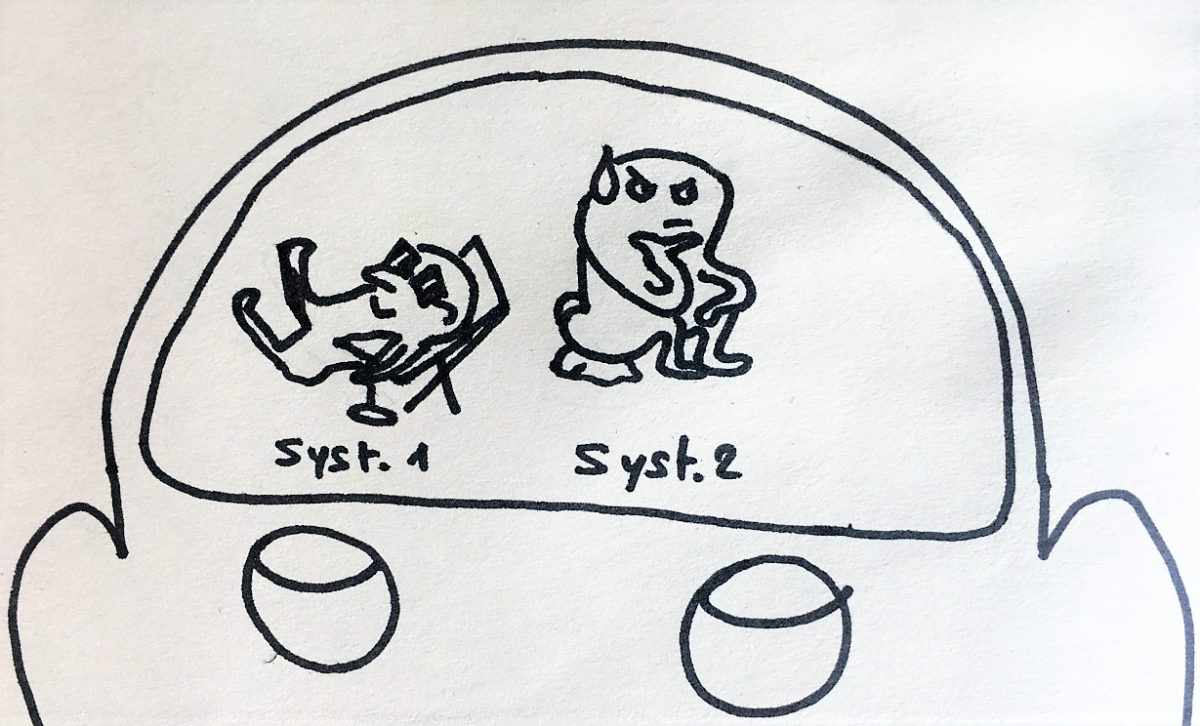Take some time to answer the following problem:
A bat and a ball cost $ 1.10.
The bat cost one dollar more than the ball.
How much does the ball costs?
Now, did you know that 50% of students from Ivy League schools like Stanford or MIT failed to give the correct answer? Students from less selective universities – peasants we are – fail by 80%. This is one of Kahneman’s tests in his book “Thinking fast and slow” unveiling how strongly we are influenced by biases. This demonstrates how limited are our cognitive abilities, leading to poor decision-making.
We trust too much in our “system 1” that is needed to operate automatically in our daily lives (e.g.: let’s trust our intuition and say this ball costs 10 cents) and make too little use of “system 2” that processes any activity requiring concentration (e.g.: no wait, actually this ball costs 20 cents).
The problem is, “system 2” is absolutely exhausting and we can only sustain in mental effort for a limited time. That is not the case for machines, as they can exercise mentally for an unlimited period of time and are unbiased: they simply make better research for decision-making than us.
Mr. Telang has shown us during lecture that machines gave better parole decisions than humans because they had relentlessly, impartially reviewed all the facts that were given before giving an approval. On the other hand, Kahneman recalls a quite disturbing experiment where human judges happily approved parole requests when they just had food but reject them in bulk when they were hungry. Yet, human biases are useful: overconfident optimism encourages people to take risks and be unexpectedly rewarded.
Thus, in business when we elaborate a strategy plan or assess job candidates, we should let machines do preliminary research as they are best qualified to do so but review the research ourselves as we are best qualified to spot abnormality with our intuition and to take more innovative, risky-yet-rewarding decisions. Kahneman also helps to understand how we work, encouraging managers to think twice before rushing into decisions based on first impressions.
reference:
Kahneman, D. (2011). Thinking, fast and slow. 1st ed. New York City: Farrar, Straus and Giroux.

